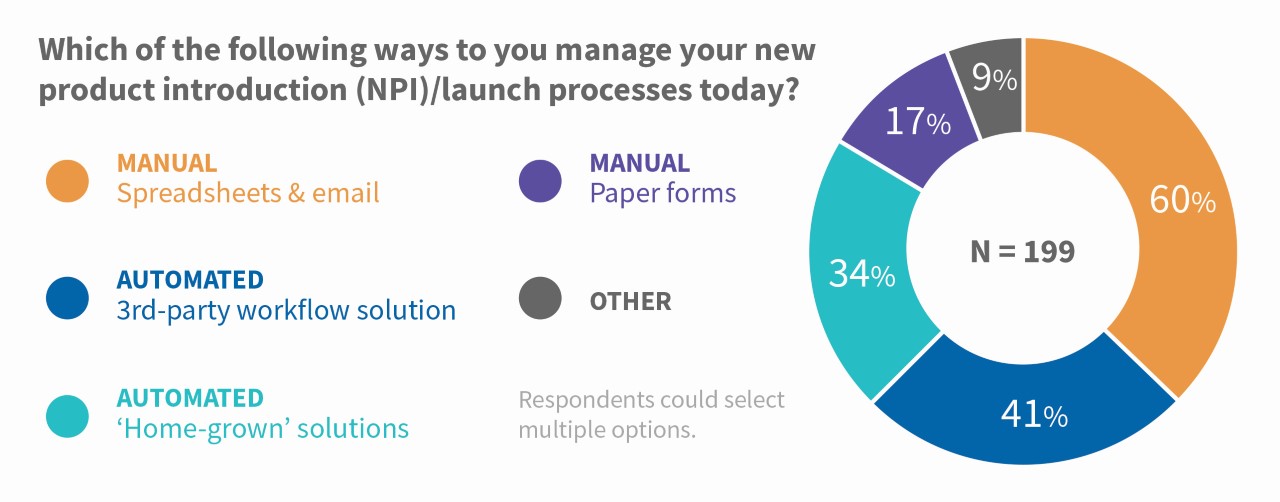It’s “Do or Die” for Many SAP Customers
How Large Manufacturers Are Struggling to Keep Pace with Industry Dynamics
You don’t have to be an industry expert to have noticed the rapid increase in new consumer products over the past few years. Walk into a typical grocery store or search online, and you’ll see a dizzying array of choices and new products appearing daily. Shifting consumer demands and disruptive business models are driving manufacturers to introduce new products at an unprecedented pace and scale. In this dynamic landscape, speed to market and business agility are critical.
This past summer, Winshuttle (now Precisely) surveyed large manufacturing companies using SAP ERP systems to learn more about their product launch processes. The results were clear: 74% of respondents felt under pressure to speed up their processes, confirming what we’ve discovered in our conversations with manufacturers; and 68% of respondents predicted that their new product launch volume would increase in the next few years — in line with industry data for new product growth.
Speed and agility are also top of mind for CEOs, with 68% of US CEOs agreeing with the statement: “Acting with agility is the new currency of business; if we are too slow, we will be bankrupt.”
A Perfect Storm for SAP Manufacturers
How long does it typically take to collect the data needed to manufacture new products in SAP ERP? According to our 2019 survey, 70% of respondents reported six months or longer for a net-new product launch, with 29% taking more than 12 months.
Why is this process so slow? First and foremost, there’s an enormous amount of data to collect, with materials being just the tip of the iceberg. Bills of material, routings, recipes, source lists, and many other data objects need to be touched as part of the launch process. Secondly, it’s complex, with processes and data varying by launch type, product line, brand, and region. Multiple departments, often eight or more, must contribute data, some of which is centralized and some that is plant-specific.
And how is this data collected today? According to our survey, 60% of respondents use spreadsheets and email, and 17% use paper forms. Volume, process complexity, and manual methods combined with market pressures have created a perfect storm for large manufacturers, compelling many to find a better way to handle their SAP launch processes.

Process Optimization and Automation Aren’t Easy or Optional
The leading way our survey participants believed they could improve their product launch processes was to streamline their existing manual processes, followed by automating data collection and entry into their systems. We’ve seen firsthand the dramatic impact that process optimization and digitization can have on SAP launch processes, with customers reducing launch cycles by 50%, and much more in some cases.
As with any successful business transformation project, the mantra of “first optimize, then digitize” holds for re-engineering product launch processes — and this is a big undertaking for large manufacturers, one that involves executive sponsorship, cross-functional collaboration, and lots of change management. But as the data from multiple sources shows, being slow in today’s market is no longer an option.




